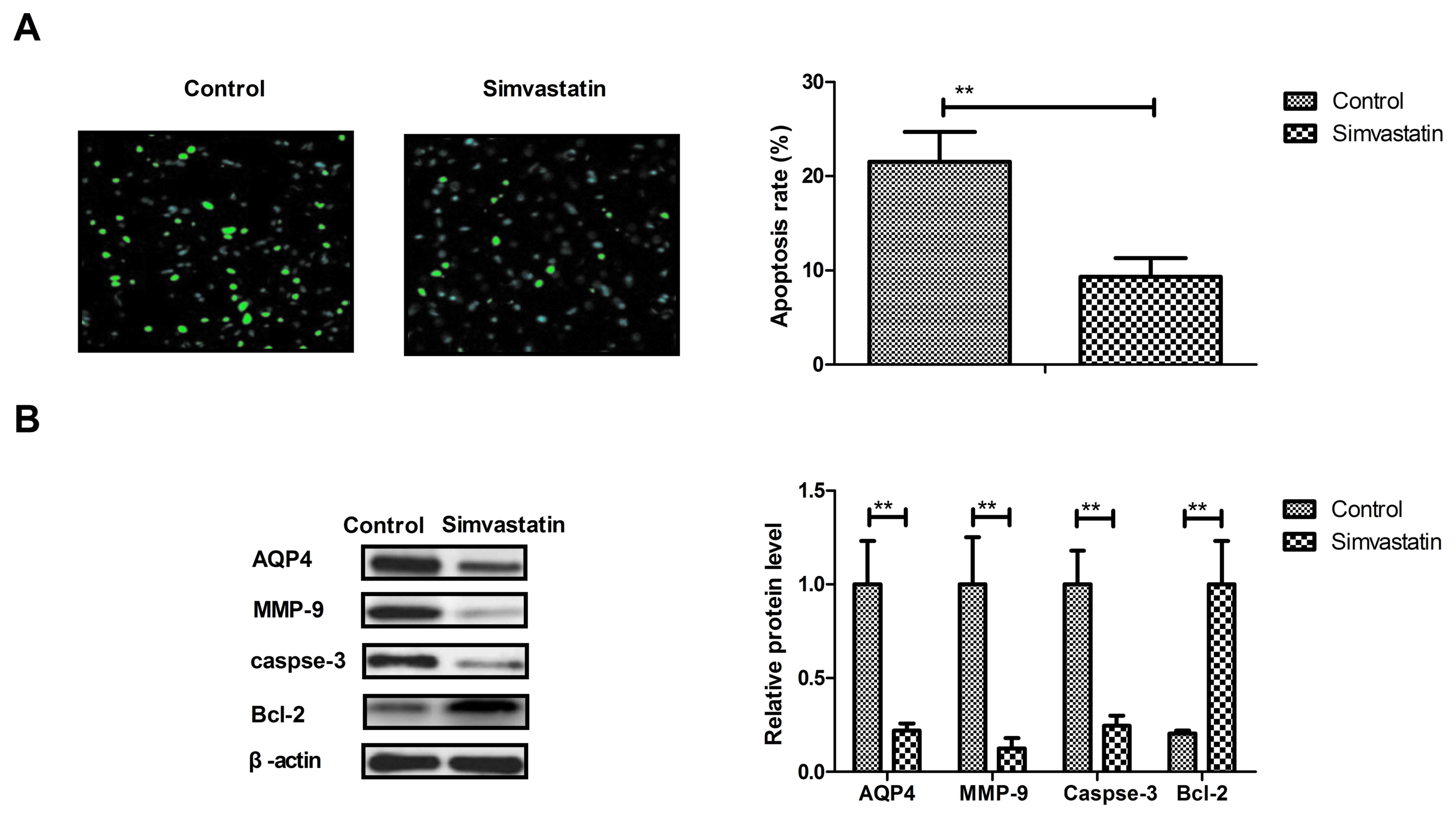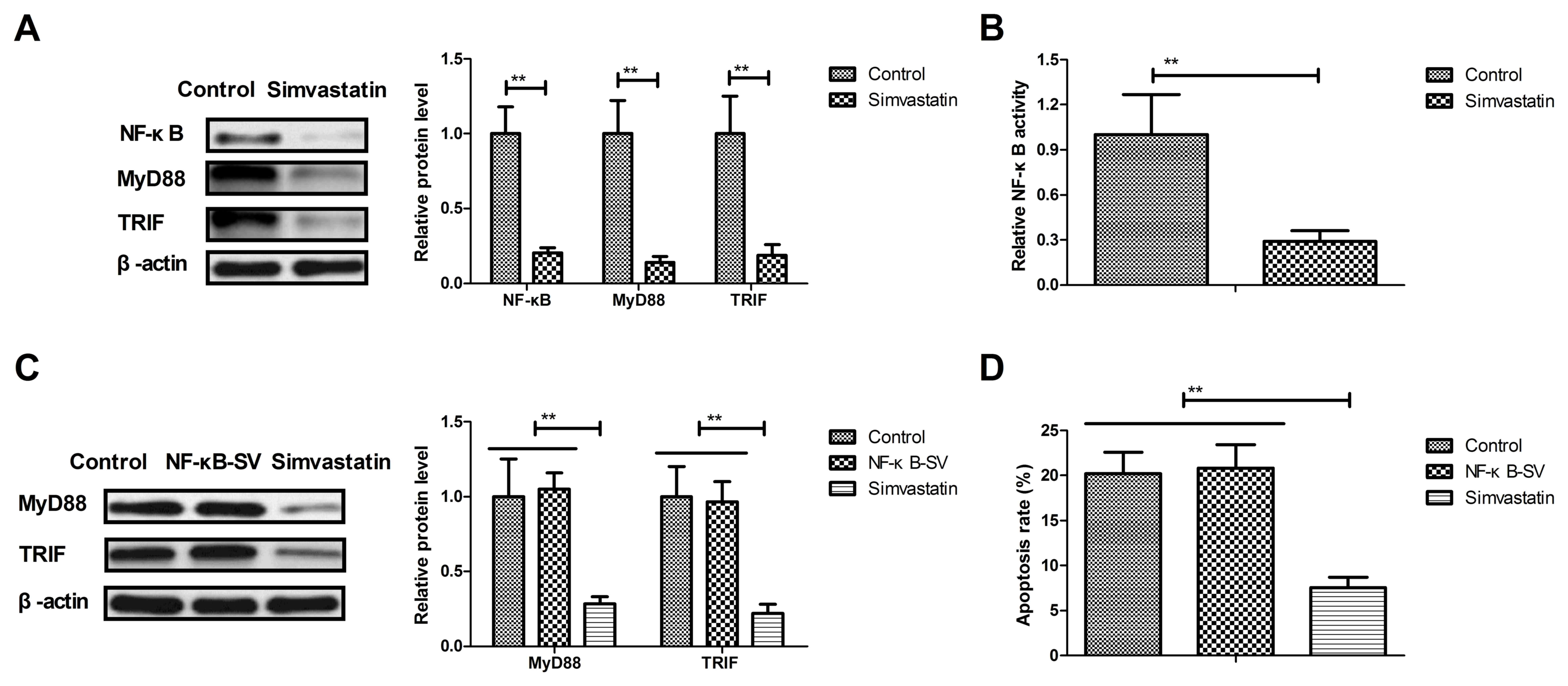|
1
|
Sussman ES and Connolly ES Jr: Hemorrhagic
transformation: A review of the rate of hemorrhage in the major
clinical trials of acute ischemic stroke. Front Neurol. 4:692013.
View Article : Google Scholar : PubMed/NCBI
|
|
2
|
Ma B and Zhang J: Nimodipine treatment to
assess a modified mouse model of intracerebral hemorrhage. Brain
Res. 1078:182–188. 2006. View Article : Google Scholar : PubMed/NCBI
|
|
3
|
Manaenko A, Fathali N, Chen H, Suzuki H,
Williams S, Zhang JH and Tang J: Heat shock protein 70 upregulation
by geldanamycin reduces brain injury in a mouse model of
intracerebral hemorrhage. Neurochem Int. 57:844–850. 2010.
View Article : Google Scholar : PubMed/NCBI
|
|
4
|
Lee HJ, Kim KS, Kim EJ, Choi HB, Lee KH,
Park IH, Ko Y, Jeong SW and Kim SU: Brain transplantation of
immortalized human neural stem cells promotes functional recovery
in mouse intracerebral hemorrhage stroke model. Stem Cells.
25:1204–1212. 2007. View Article : Google Scholar : PubMed/NCBI
|
|
5
|
Kumar N Ganesh, Zuckerman SL, Khan IS,
Dewan MC, Morone PJ and Mocco J: Treatment of intracerebral
hemorrhage: A selective review and future directions. J Neurosurg
Sci. 61:523–535. 2017.PubMed/NCBI
|
|
6
|
Lee WJ, Yeon JY, Jo KI, Kim JS and Hong
SC: Reversible cerebral vasoconstriction syndrome and posterior
reversible encephalopathy syndrome presenting with deep
intracerebral hemorrhage in young women. J Cerebrovasc Endovasc
Neurosurg. 17:239–245. 2015. View Article : Google Scholar : PubMed/NCBI
|
|
7
|
Kanamaru K, Suzuki H and Taki W: Cerebral
infarction after aneurysmal subarachnoid hemorrhage. Acta Neurochir
Suppl. 121:167–172. 2016. View Article : Google Scholar : PubMed/NCBI
|
|
8
|
Lu L, Barfejani AH, Qin T, Dong Q, Ayata C
and Waeber C: Fingolimod exerts neuroprotective effects in a mouse
model of intracerebral hemorrhage. Brain Res. 1555:89–96. 2014.
View Article : Google Scholar : PubMed/NCBI
|
|
9
|
Ramadan WH and Kabbara WK:
Sitagliptin/simvastatin: A first combination tablet to treat type 2
diabetes and hypercholesterolemia-a review of its characteristics.
Vasc Health Risk Manag. 11:125–132. 2015. View Article : Google Scholar : PubMed/NCBI
|
|
10
|
Taveira-DaSilva AM, Jones AM,
Julien-Williams PA, Stylianou M and Moss J: Retrospective review of
combined sirolimus and simvastatin therapy in
lymphangioleiomyomatosis. Chest. 147:180–187. 2015. View Article : Google Scholar : PubMed/NCBI
|
|
11
|
Yasuda H, Yuen PS, Hu X, Zhou H and Star
RA: Simvastatin improves sepsis-induced mortality and acute kidney
injury via renal vascular effects. Kidney Int. 69:1535–1542. 2006.
View Article : Google Scholar : PubMed/NCBI
|
|
12
|
Karki K, Knight RA, Han Y, Yang D, Zhang
J, Ledbetter KA, Chopp M and Seyfried DM: Simvastatin and
atorvastatin improve neurological outcome after experimental
intracerebral hemorrhage. Stroke. 40:3384–3389. 2009. View Article : Google Scholar : PubMed/NCBI
|
|
13
|
Lapchak PA and Han MK: The
3-hydroxy-3-methylglutaryl coenzyme A reductase inhibitor
simvastatin reduces thrombolytic-induced intracerebral hemorrhage
in embolized rabbits. Brain Res. 1303:144–150. 2009. View Article : Google Scholar : PubMed/NCBI
|
|
14
|
Yang D, Knight RA, Han Y, Karki K, Zhang
J, Ding C, Chopp M and Seyfried DM: Vascular recovery promoted by
atorvastatin and simvastatin after experimental intracerebral
hemorrhage: Magnetic resonance imaging and histological study. J
Neurosurg. 114:1135–1142. 2011. View Article : Google Scholar : PubMed/NCBI
|
|
15
|
Shimamura N, Kakuta K, Wang L, Naraoka M,
Uchida H, Wakao S, Dezawa M and Ohkuma H: Neuro-regeneration
therapy using human Muse cells is highly effective in a mouse
intracerebral hemorrhage model. Exp Brain Res. 235:565–572. 2017.
View Article : Google Scholar : PubMed/NCBI
|
|
16
|
Park JS, Kim S, Han DK, Lee JY and Ghil
SH: Isolation of neural precursor cells from skeletal muscle
tissues and their differentiation into neuron-like cells. Exp Mol
Med. 39:483–490. 2007. View Article : Google Scholar : PubMed/NCBI
|
|
17
|
Hijioka M, Matsushita H, Hisatsune A,
Isohama Y and Katsuki H: Therapeutic effect of nicotine in a mouse
model of intracerebral hemorrhage. J Pharmacol Exp Ther.
338:741–749. 2011. View Article : Google Scholar : PubMed/NCBI
|
|
18
|
Tong LS, Shao AW, Ou YB, Guo ZN, Manaenko
A, Dixon BJ, Tang J, Lou M and Zhang JH: Recombinant Gas6 augments
Axl and facilitates immune restoration in an intracerebral
hemorrhage mouse model. J Cereb Blood Flow Metab. 37:1971–1981.
2017. View Article : Google Scholar : PubMed/NCBI
|
|
19
|
Hsieh TH, Kang JW, Lai JH, Huang YZ,
Rotenberg A, Chen KY, Wang JY, Chan SY, Chen SC, Chiang YH and Peng
CW: Relationship of mechanical impact magnitude to neurologic
dysfunction severity in a rat traumatic brain injury model. PLoS
One. 12:e01781862017. View Article : Google Scholar : PubMed/NCBI
|
|
20
|
McGirt MJ, Pradilla G, Legnani FG, Thai
QA, Recinos PF, Tamargo RJ and Clatterbuck RE: Systemic
administration of simvastatin after the onset of experimental
subarachnoid hemorrhage attenuates cerebral vasospasm.
Neurosurgery. 58:945–951. 2006. View Article : Google Scholar : PubMed/NCBI
|
|
21
|
Sugawara T, Jadhav V, Ayer R and Zhang J:
Simvastatin attenuates cerebral vasospasm and improves outcomes by
upregulation of PI3K/Akt pathway in a rat model of subarachnoid
hemorrhage. Acta Neurochir Suppl. 102:391–394. 2008. View Article : Google Scholar : PubMed/NCBI
|
|
22
|
Brown RJ, Epling BP, Staff I, Fortunato G,
Grady JJ and McCullough LD: Polyuria and cerebral vasospasm after
aneurysmal subarachnoid hemorrhage. BMC Neurol. 15:2012015.
View Article : Google Scholar : PubMed/NCBI
|
|
23
|
Jenson AV, Rodriguez GJ, Alvarado LA,
Cruz-Flores S and Maud A: Higher rate of intracerebral hemorrhage
in hispanic patients with cerebral cavernous malformation. J Vasc
Interv Neurol. 8:1–4. 2015.PubMed/NCBI
|
|
24
|
Sugawara T, Ayer R, Jadhav V, Chen W,
Tsubokawa T and Zhang JH: Simvastatin attenuation of cerebral
vasospasm after subarachnoid hemorrhage in rats via increased
phosphorylation of Akt and endothelial nitric oxide synthase. J
Neurosci Res. 86:3635–3643. 2008. View Article : Google Scholar : PubMed/NCBI
|
|
25
|
Lin C, Zhao Y, Wan G, Zhu A and Wang H:
Effects of simvastatin and taurine on delayed cerebral vasospasm
following subarachnoid hemorrhage in rabbits. Exp Ther Med.
11:1355–1360. 2016. View Article : Google Scholar : PubMed/NCBI
|
|
26
|
Zhou HX, Gao LH, Meng LL, Zhang YX, Wei ZF
and Si DW: Preventive and therapeutic effect of simvastatin on
secondary inflammatory damage of rats with cerebral hemorrhage.
Asian Pac J Trop Med. 10:152–156. 2017. View Article : Google Scholar : PubMed/NCBI
|
|
27
|
Zhang Z, Liu Y, Huang Q, Su Y, Zhang Y,
Wang G and Li F: NF-kB activation and cell death after
intracerebral hemorrhage in patients. Neurol Sci. 35:1097–1102.
2014. View Article : Google Scholar : PubMed/NCBI
|
|
28
|
Shen X, Ma L, Dong W, Wu Q, Gao Y, Luo C,
Zhang M, Chen X and Tao L: Autophagy regulates intracerebral
hemorrhage induced neural damage via apoptosis and NF-kB pathway.
Neurochem Int. 96:100–112. 2016. View Article : Google Scholar : PubMed/NCBI
|
|
29
|
Mikael LG and Rozen R: Homocysteine
modulates the effect of simvastatin on expression of ApoA-I and
NF-kappaB/iNOS. Cardiovasc Res. 80:151–158. 2008. View Article : Google Scholar : PubMed/NCBI
|













